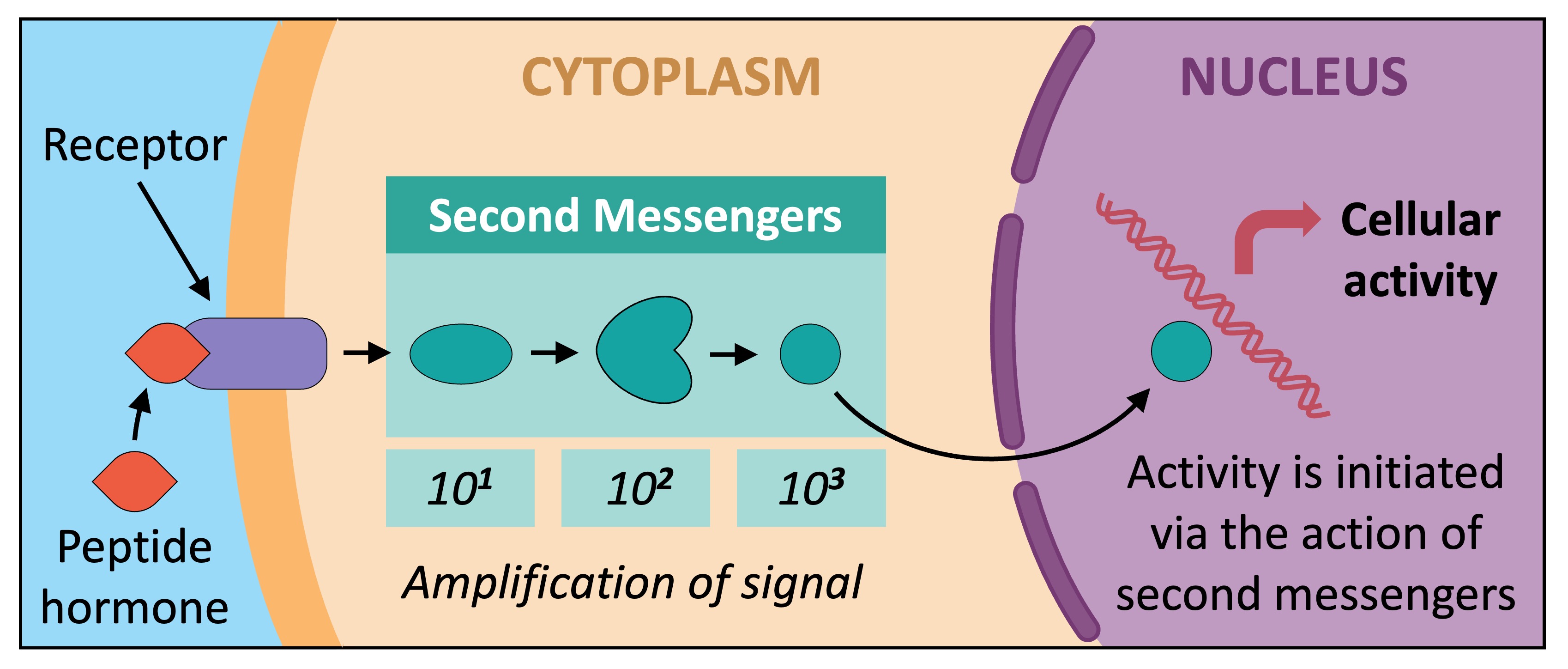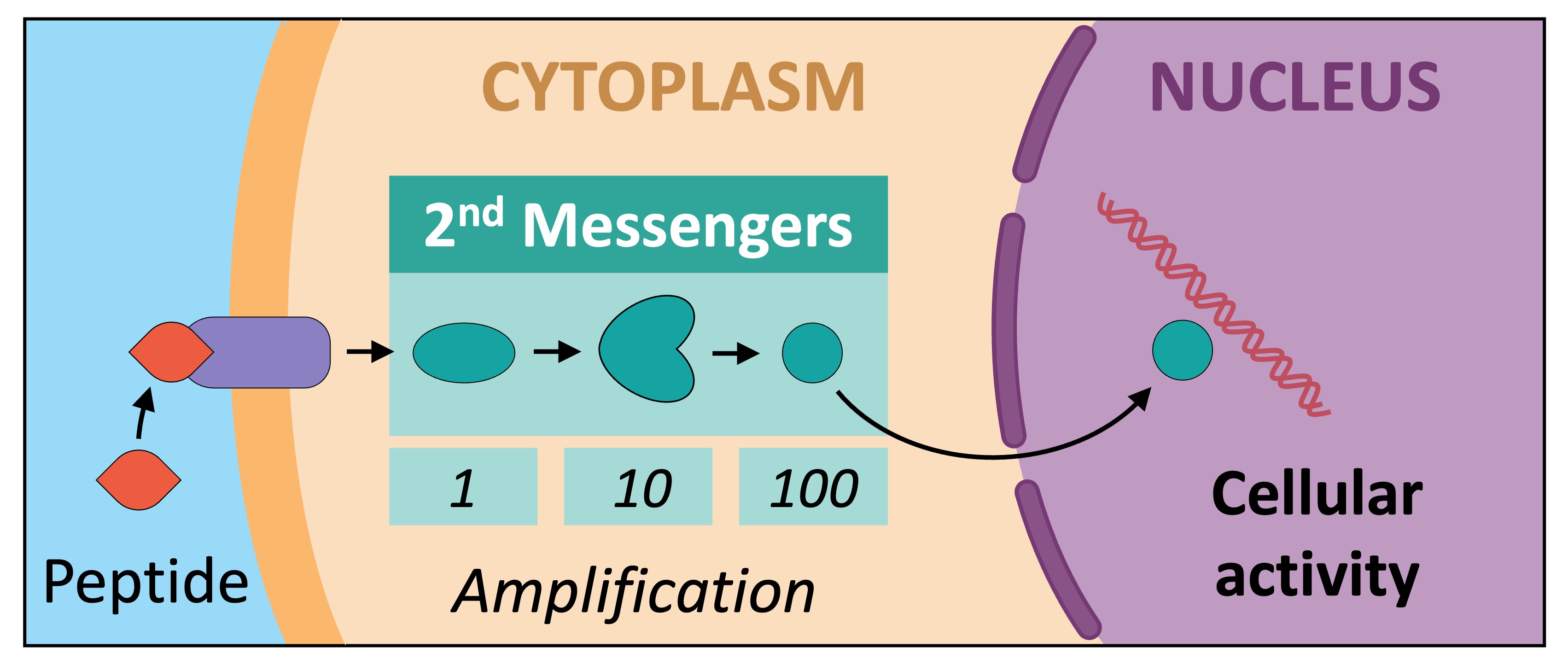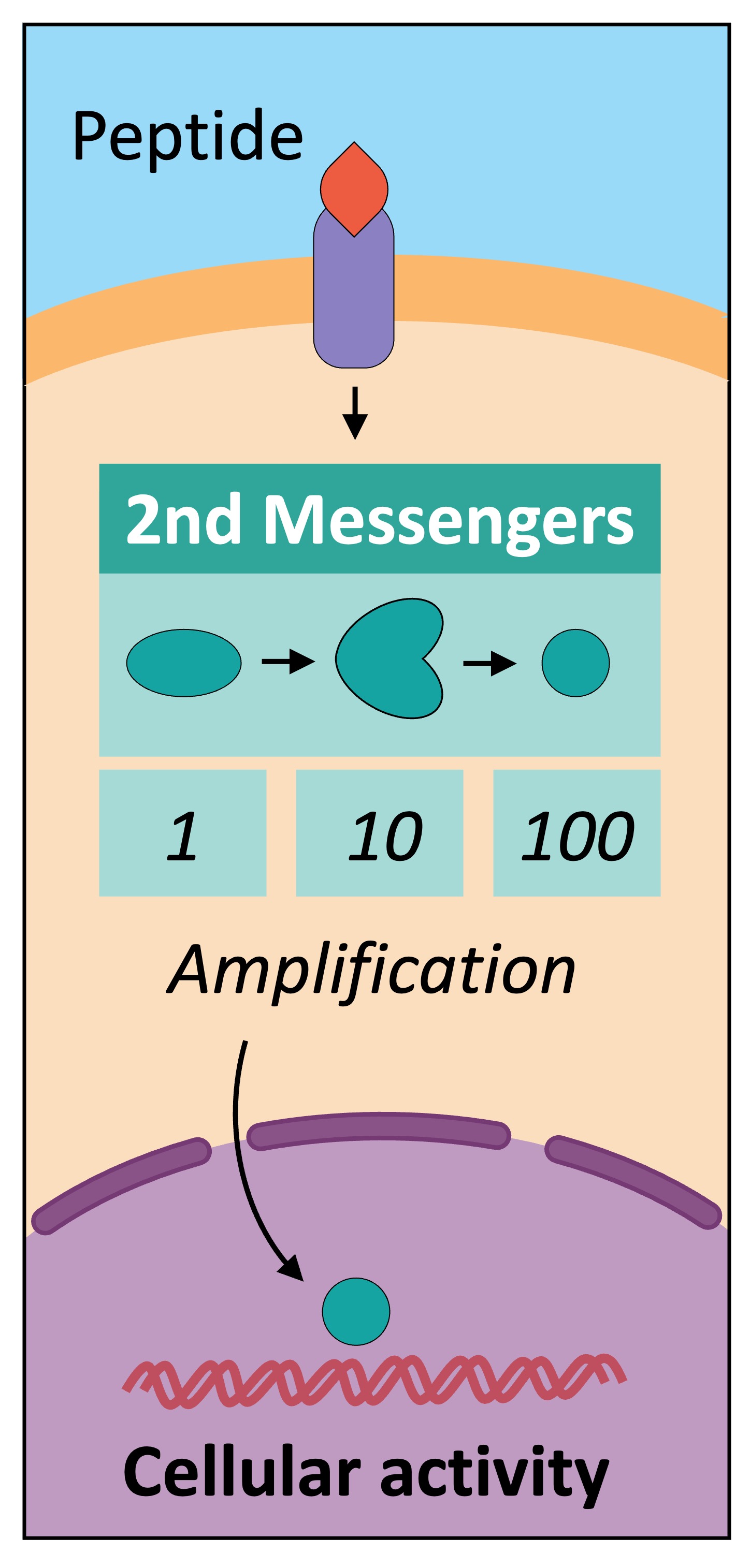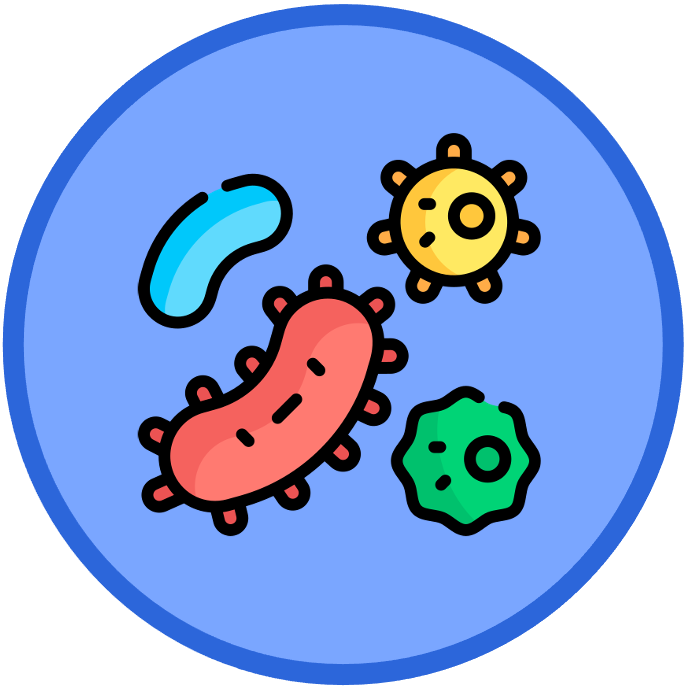

Signal Transduction
Cell signalling pathways involve three basic stages:
-
Reception – A ligand binds to a receptor either within the cell or on the cell membrane
-
Transduction – The receptor converts the chemical signal into a cellular signal (this may involve a sequential cascade)
-
Response – A change is initiated within the cell (affecting gene expression, metabolic activity or shape and movement)
The type of receptor activated (intracellular or transmembrane) is determined by the chemical properties of the ligand
-
Hydrophobic ligands (e.g. steroids) bind to intracellular receptors that have hydrophilic surfaces (for associating with aqueous solutions) and non-polar binding sites
-
Hydrophilic ligands (e.g. peptides) bind to transmembrane receptors that have non-polar surfaces embedded within the lipid bilayer, while polar amino acids are exposed to the surrounding fluids and form the binding site
Types of Receptors
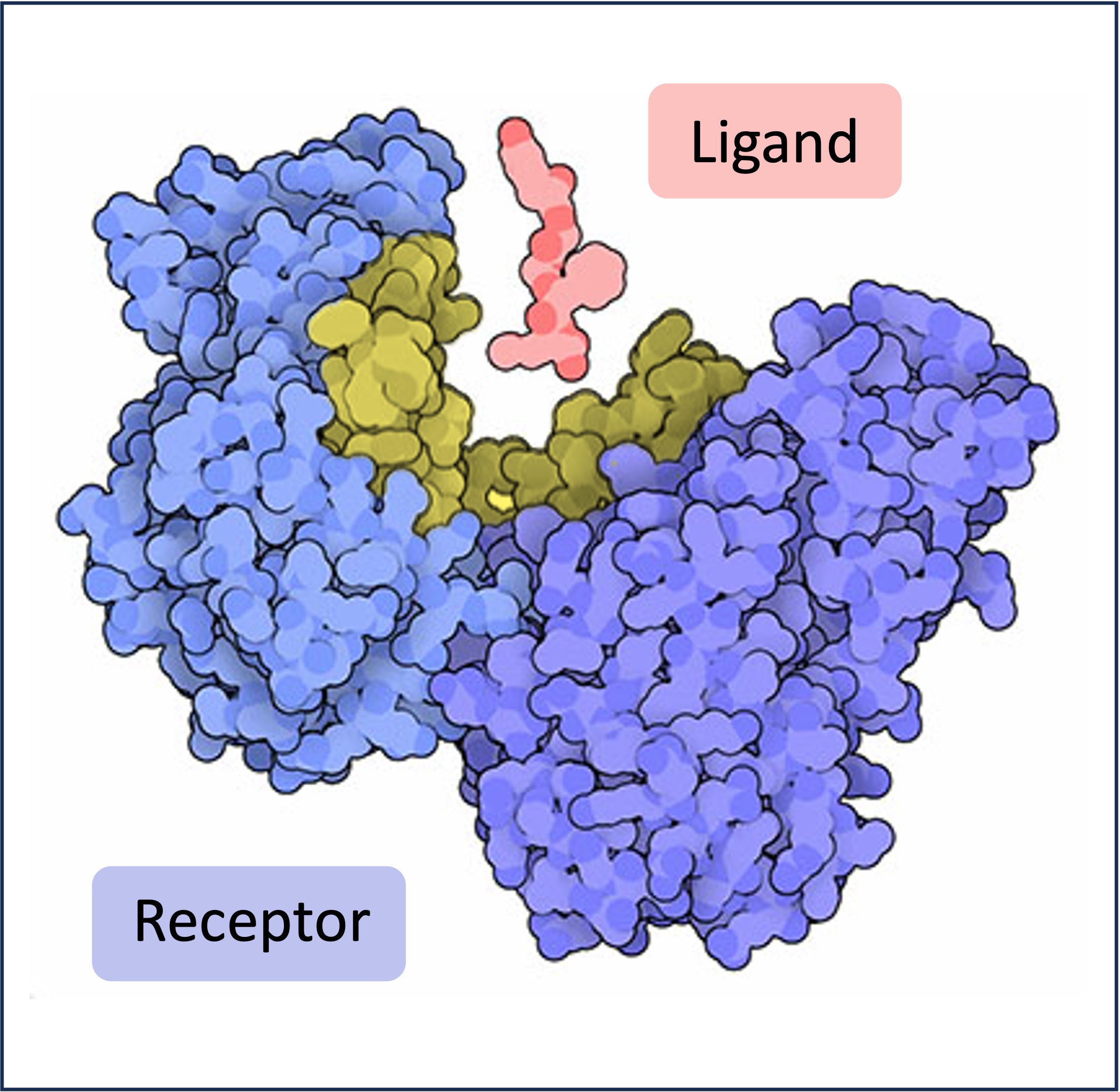
Intracellular Receptor
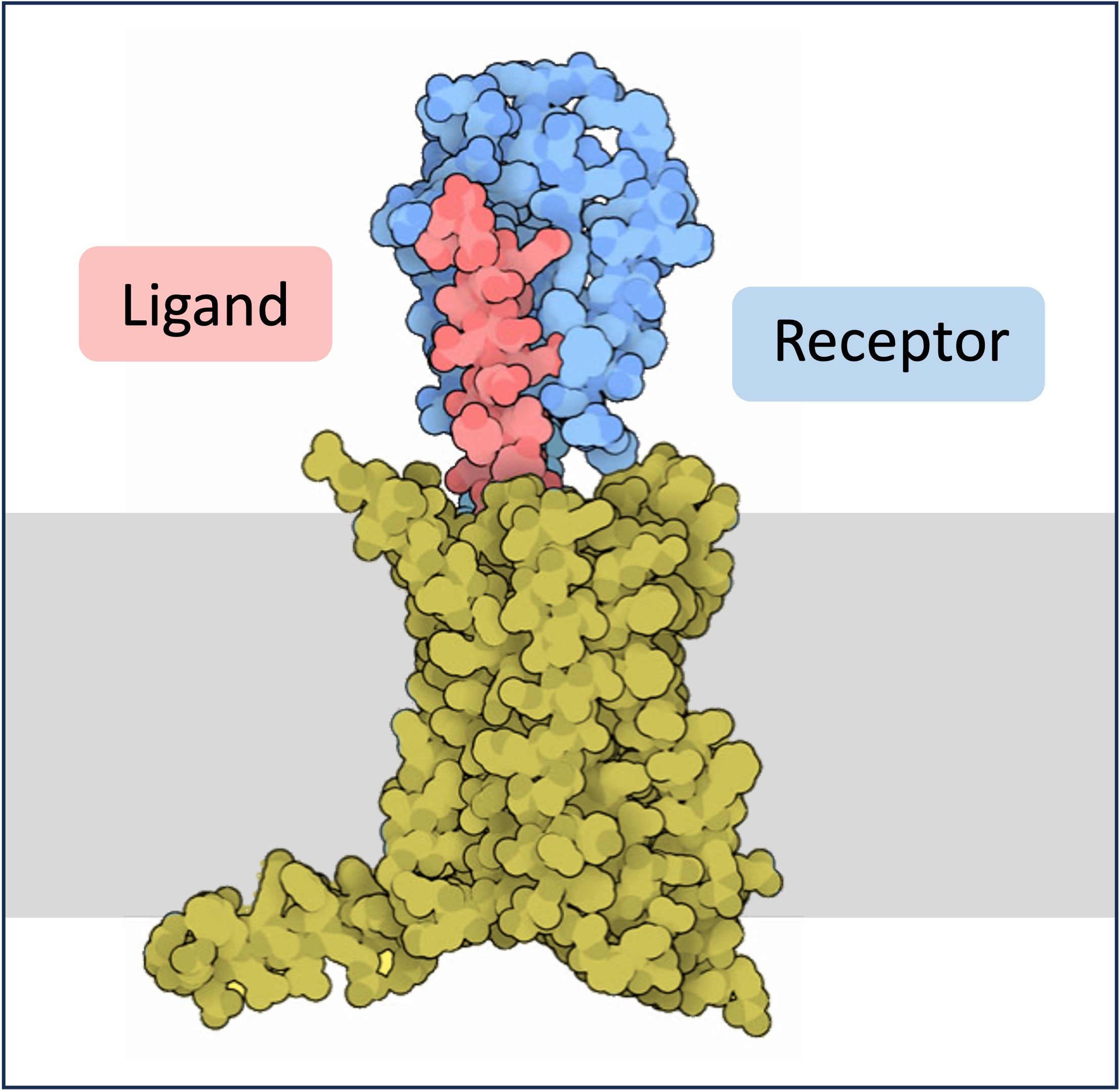
Transmembrane Receptor
Transduction Pathways
Signal transduction pathways differ according to whether the ligand is able to enter the cell directly
-
Hydrophobic ligands can enter the cell and bind to intracellular receptors while hydrophilic ligands associate with receptors on the plasma membrane
Intracellular Receptors
-
Lipophilic (fat-soluble) ligands such as steroid hormones can freely diffuse across the plasma membrane of a cell
-
They bind to receptors in either the cytoplasm or nucleus of the target cell, to form an active receptor-hormone complex
-
This activated complex will move into the nucleus and bind directly to DNA, acting as a transcription factor for gene expression
-
Examples of steroid hormones include those produced by the gonads (i.e. estrogen, progesterone and testosterone)
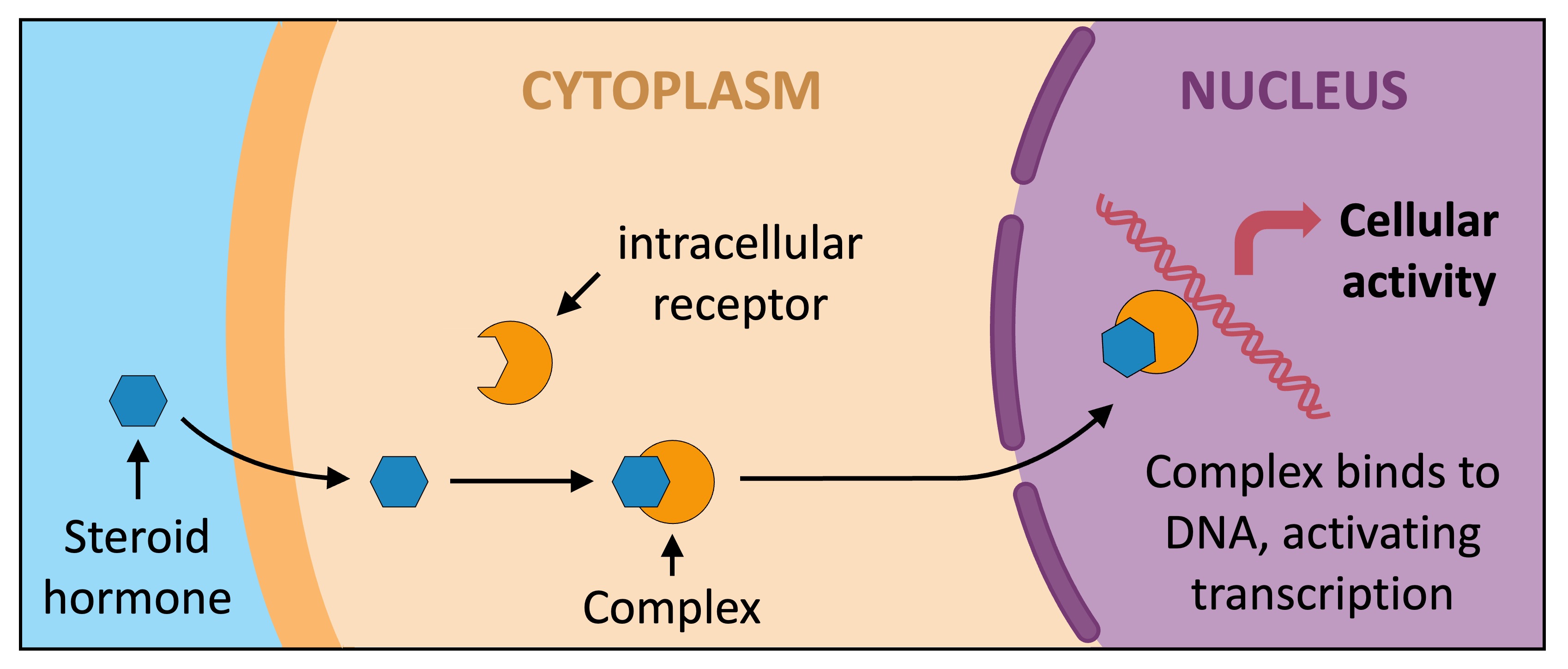
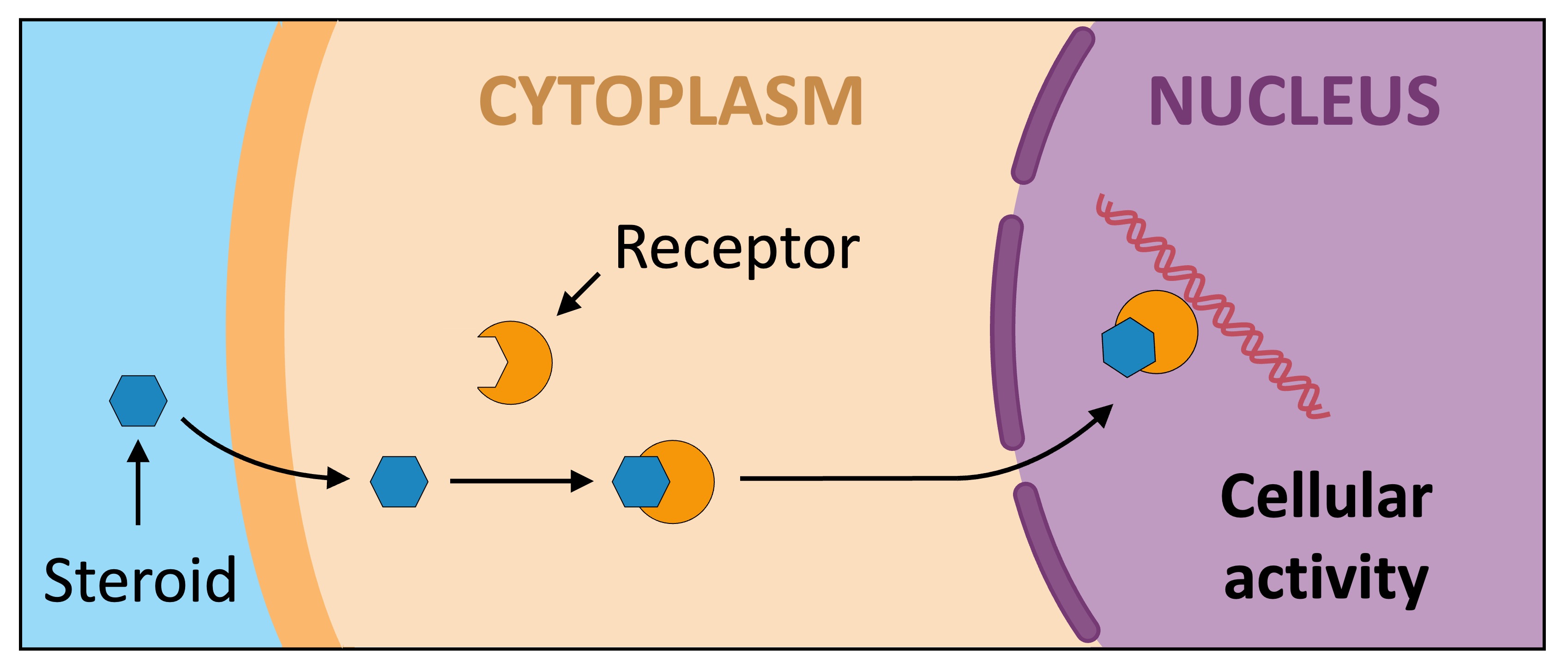
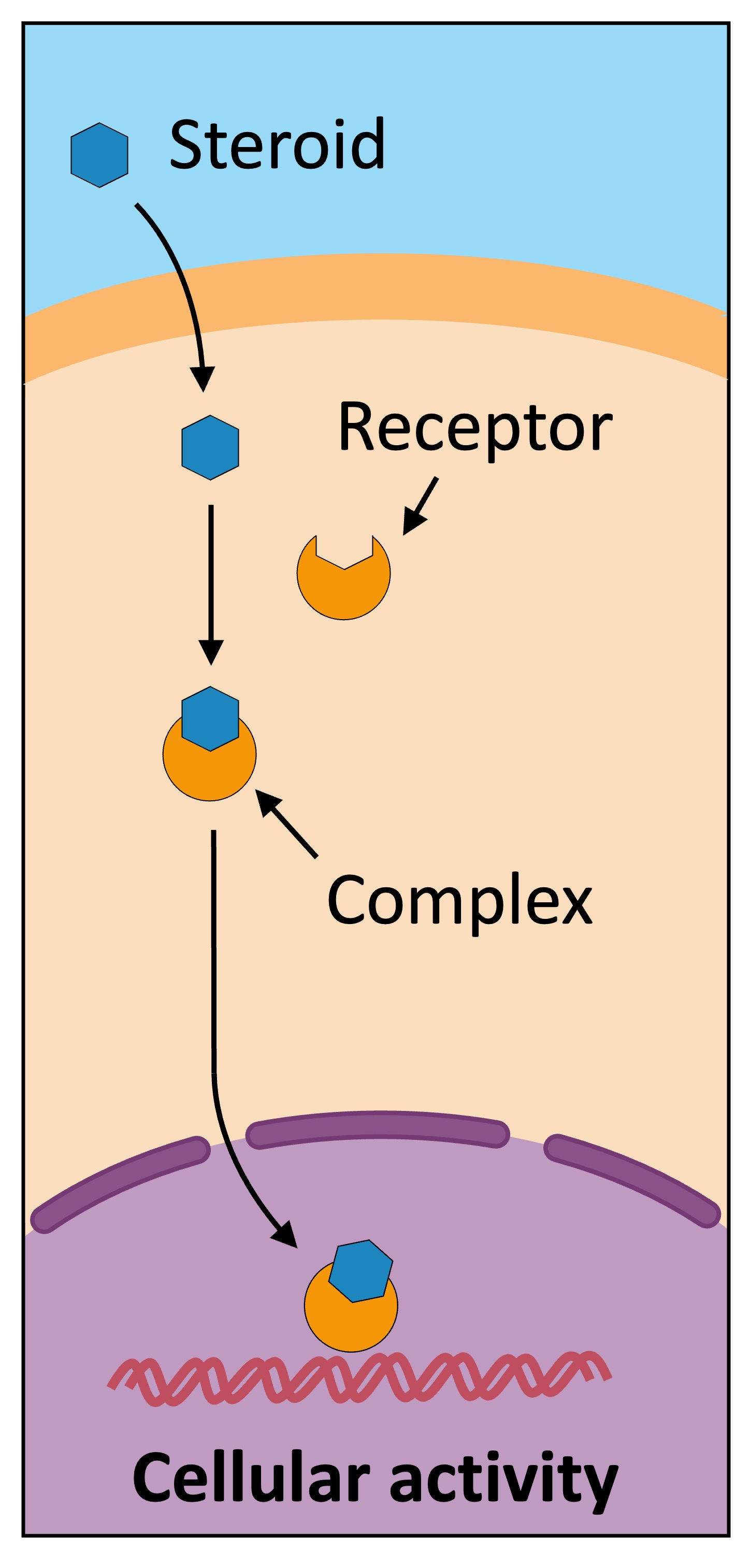
Transmembrane Receptors
-
Hydrophilic ligands such as peptide hormones are lipophobic – meaning they cannot freely cross the plasma membrane
-
They bind to transmembrane receptors on the surface of the cell, which are typically coupled to internally anchored proteins (e.g. G proteins)
-
The receptor complex activates a series of intracellular molecules called second messengers, which initiate cell activity
-
Examples of second messengers include cyclic AMP (cAMP), calcium ions, nitric oxide (NO) and protein kinases
-
The use of second messengers enables the amplification of the initial signal (as more molecules are sequentially activated)
-
Peptide hormones include insulin, glucagon, leptin, ADH and oxytocin
